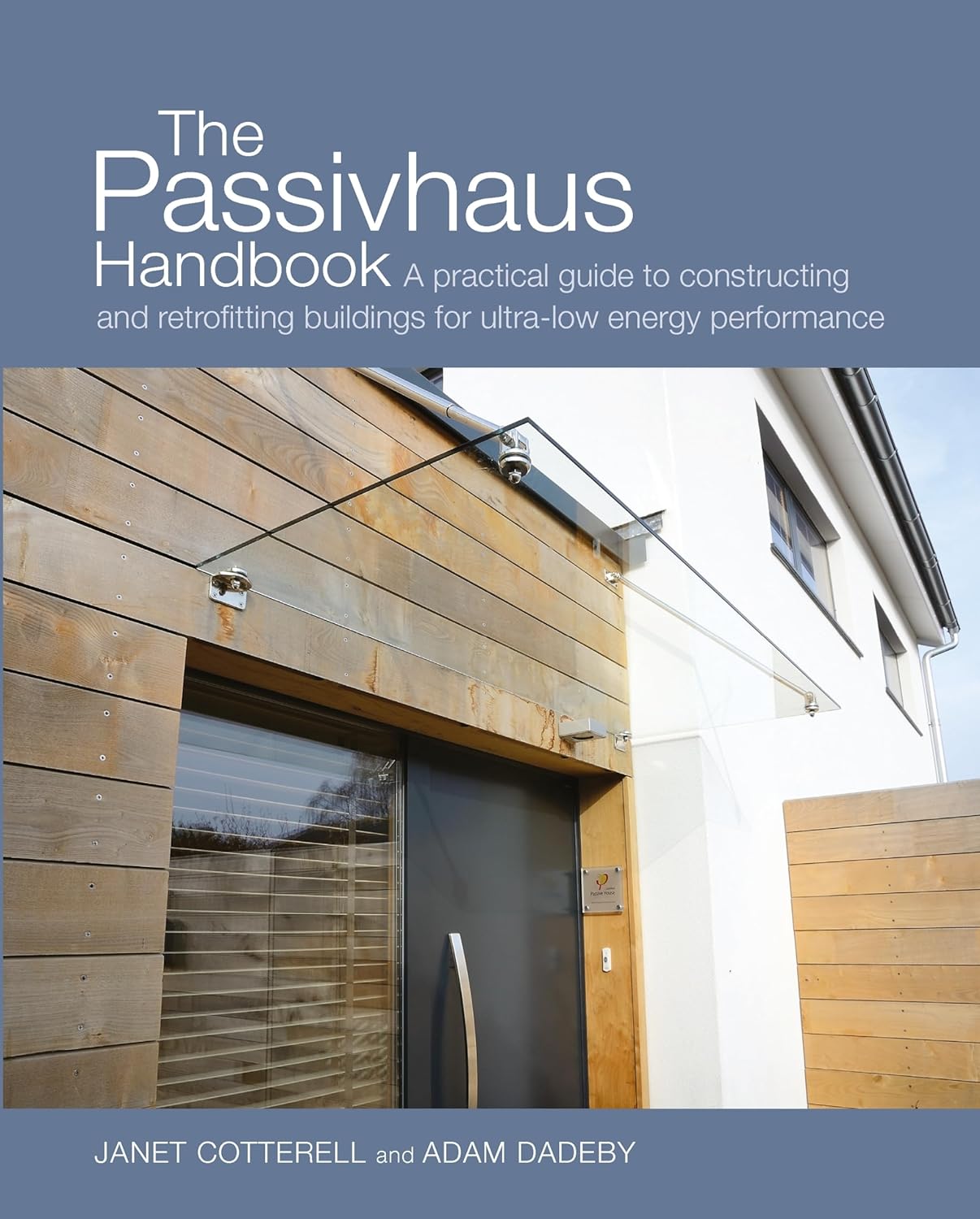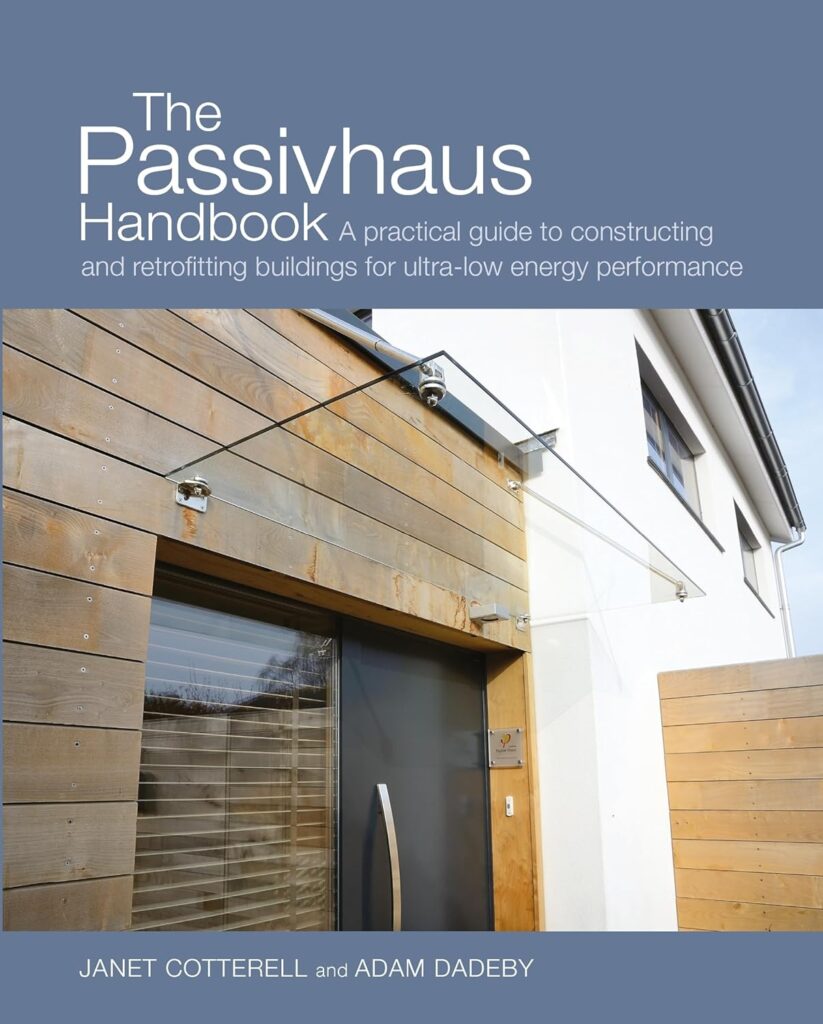The Passivhaus Handbook is a comprehensive and practical guide that provides valuable insights on constructing and retrofitting buildings for ultra-low energy performance. This paperback, written by influential architects and experts, offers a wealth of knowledge on sustainable building techniques. With its release in October 2012, the Passivhaus Handbook has become a go-to resource for individuals in the construction and retrofitting industry, providing them with the necessary tools and techniques to achieve high energy efficiency in their projects.
Why Consider This Product?
With the increasing focus on sustainable building practices, “The Passivhaus Handbook” offers a practical guide to constructing and retrofitting buildings for ultra-low energy performance. It presents an opportunity to make a positive impact on the environment while also benefiting from reduced energy consumption and lower energy bills. Backed by scientific research and evidence, this handbook provides a comprehensive approach to achieving energy-efficient buildings.
Certified by Passivhaus Institut, an internationally recognized organization dedicated to promoting passive house concepts, this book ensures credibility and adherence to rigorous standards. It has also received endorsements from experts in the field, further showcasing its reliability and usefulness.
Features and Benefits
Compact and Easy-to-Follow Instructions
Within “The Passivhaus Handbook,” readers will find clear and concise instructions that guide them through the process of constructing or retrofitting buildings for ultra-low energy performance. Its compact design makes it easy to carry and reference on-site, ensuring that users have the necessary information at their fingertips.
Design Strategies and Techniques
The handbook highlights various design strategies and techniques that enable the creation of energy-efficient buildings. It explores insulation, airtightness, ventilation, and renewable energy systems, providing step-by-step guidance on their implementation. By incorporating these strategies, users can optimize the energy performance of their buildings, reducing their carbon footprint.
Practical Case Studies
Mastering Sustainable Design: Reviewing the Passivhaus Handbook for Energy-Efficient Building Strategies
To reinforce the concepts and theories within the handbook, practical case studies are included. These real-life examples demonstrate the successful implementation of Passivhaus principles in different types of buildings, offering inspiration and insights into best practices.
Comprehensive Resource
“The Passivhaus Handbook” acts as a comprehensive resource, covering all aspects of Passivhaus construction and retrofitting. It addresses both residential and non-residential buildings, making it suitable for architects, engineers, contractors, and even homeowners interested in energy-efficient building practices.
Product Quality
“The Passivhaus Handbook” is a well-researched and meticulously written publication. Authored by Janet Cotterell and Adam Dadeby, two experienced Passivhaus consultants, it reflects their expertise and commitment to sustainable building practices.
With a publication date of October 2012, the handbook has established itself as a trusted resource in the field of energy-efficient construction and retrofitting. Its availability in paperback ensures accessibility to a wide audience.
What It’s Used For
Guiding Construction Projects
“The Passivhaus Handbook” serves as an essential guide for those involved in the construction of new buildings with a focus on ultra-low energy performance. It provides step-by-step instructions, design strategies, and practical case studies to aid in the successful implementation of Passivhaus principles.
Retrofitting Existing Buildings
For those looking to make their existing buildings more energy-efficient, the handbook offers valuable insights. It provides guidance on how to retrofit buildings to meet Passivhaus standards, reducing energy consumption and enhancing comfort levels.
Self-Education and Professional Development
Architects, engineers, and other professionals in the building industry can use “The Passivhaus Handbook” as a self-education and professional development tool. It expands their knowledge of energy-efficient building practices and equips them with the skills to implement Passivhaus principles in their projects.
Empowering Homeowners
Homeowners interested in energy-efficient building practices can utilize this handbook to understand the concepts and strategies involved. It empowers them to make informed decisions when engaging with architects, contractors, and other professionals involved in their building projects.
Product Specifications
| Specification | Details |
|---|---|
| Author | Janet Cotterell and Adam Dadeby |
| Paperback | October 25, 2012 |
| Pages | 352 |
| Publisher | Green Books Ltd |
| Language | English |
| ISBN-10 | 0857840961 |
| ISBN-13 | 978-0857840969 |
| Dimensions | 15.2 x 2.3 x 22.9 cm |
| Weight | 672 grams |
Who Needs This
“The Passivhaus Handbook” is a valuable resource for a wide range of individuals and professionals. Architects, engineers, contractors, and building developers can enhance their knowledge and skills in energy-efficient construction. Homeowners interested in reducing their carbon footprint and achieving long-term energy savings will also find this handbook beneficial.
Pros and Cons
Pros
- Comprehensive guide for constructing and retrofitting energy-efficient buildings
- Clear and concise instructions
- Practical case studies for real-life application
- Endorsed by experts in the field
Cons
- May require some basic understanding of building construction principles
- Primarily focuses on the Passivhaus concept, limiting its application to other sustainable building approaches
FAQ’s
- Will “The Passivhaus Handbook” help me reduce my energy bills?
- Yes, by following the strategies and techniques outlined in the handbook, you can significantly reduce energy consumption and lower your energy bills.
- Is this handbook suitable for homeowners without any technical background?
- While some basic understanding of building construction may be helpful, the handbook is written in a user-friendly manner, making it accessible to homeowners and professionals alike.
- Can this book be used outside of the United Kingdom?
- Yes, the principles and strategies explained in “The Passivhaus Handbook” are applicable worldwide.
What Customers Are Saying
According to customer testimonials, “The Passivhaus Handbook” has been praised for its clarity, practicality, and usefulness. Readers have found it invaluable in their pursuit of energy-efficient building practices, with many noting that it has revolutionized their approach to construction and retrofitting.
Overall Value
“The Passivhaus Handbook” offers exceptional value to anyone interested in energy-efficient building practices. With its comprehensive content, practical instruction, and real-life case studies, it empowers individuals and professionals to create buildings with ultra-low energy performance. The credibility of endorsements and certifications further enhances its value as a reliable resource.
Tips and Tricks For Best Results
- Read and familiarize yourself with the entire handbook before starting a project.
- Take note of the practical case studies and incorporate their lessons into your own designs.
- Seek professional guidance and support when necessary, especially for complex projects.
- Regularly refer back to the handbook as a quick reference during construction or retrofitting.
Final Thoughts
Product Summary
“The Passivhaus Handbook” is a practical guide that enables the construction and retrofitting of buildings for ultra-low energy performance. It offers clear instructions, design strategies, and practical case studies, making it suitable for professionals and homeowners alike. With its certifications and endorsements, this handbook is a trusted resource in the field of sustainable building.
Final Recommendation
We highly recommend “The Passivhaus Handbook” to anyone involved in the construction or retrofitting of buildings. Its comprehensive content, practical approach, and wealth of knowledge make it an invaluable tool for achieving energy-efficient buildings and reducing our impact on the environment. Grab your copy today and take the first step towards a sustainable future.







